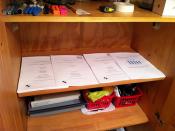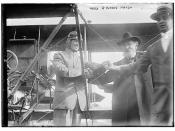Managing People, Performance and Resources
2. Authors such as Hudson (2002) have sought to identify the characteristics of effective teams. Explore critically, using relevant literature and your own experience, how a manager can ensure their team can work effectively.
Word count: 3287
The use of teams has become an extremely popular work design in all types of organisations today. The basic argument of what makes an effective team is in essence about one best way or a contextual approach. One can take a one best way approach but only at a very general level, such as being clear about what is to be achieved and needing good communication and the use of other tools to help integrate and encourage a positive flow within the team. Theories formulated such as Hudson (2002) and Hackman & Walton (1986-87) illustrate this approach. However they may suggest tools for this process such as good communication, but do not delve into the detail of what good communication is.
Such as, the influence of individuals on the communication, the depth of communication, the structure of communication and other human related factors. The contextual approach for example, would look at the individual merits of a team and how it had performed based on the related factors and circumstances of that team and the individuals that are the sum of the parts.
The definitions of teams tackle the term both conceptually and concretely. Conceptually, a team can be viewed as a socially constructed phenomenon or linking mechanism that integrates individuals and organisations (Horvath, Callahan, Croswell & Mukri, 1996). A team's concrete characteristics focus on attributes internal to the team. For example, Dyer (1984) defined a team as having two or more people with a common goal, specific role assignments, and interdependence. Guzzo and Dickson (1996) recognise that work...


